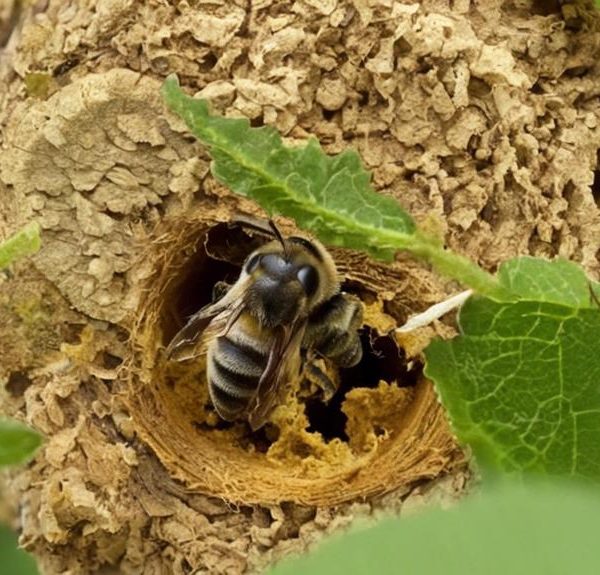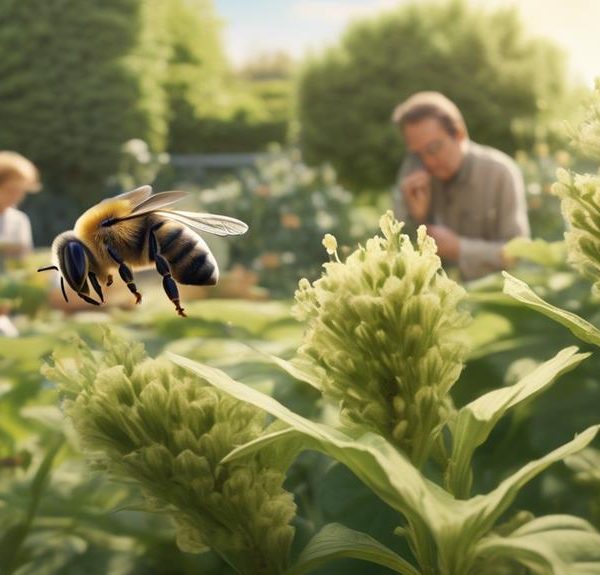Observe the solitary Brown Footed Leafcutter Bee, an architectural marvel and crucial player in our ecosystem, whose unique nest-building behavior will leave you fascinated.
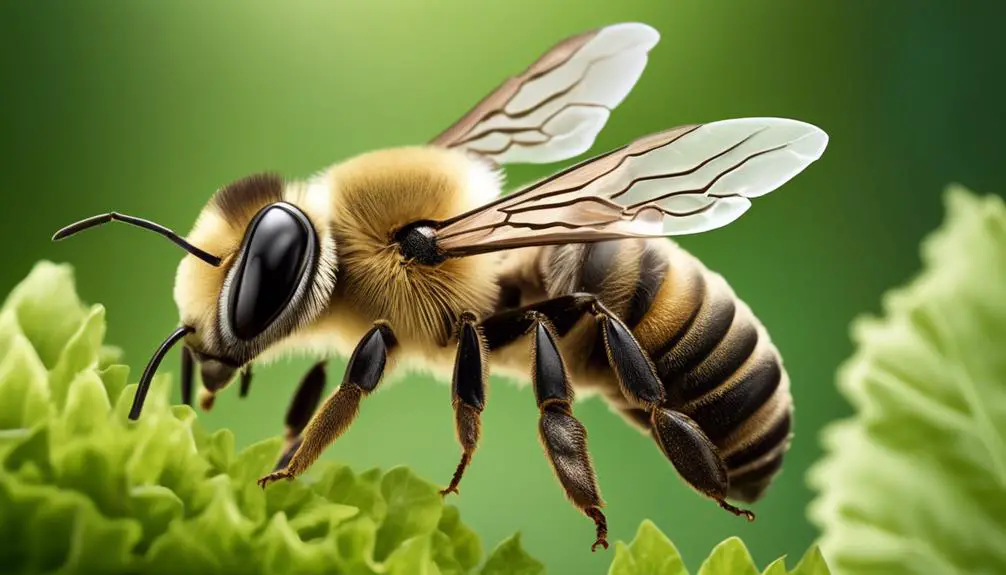
Brown Footed Leafcutter Bee
You might not be aware of the Brown Footed Leafcutter Bee, an intriguing solitary bee species known for its unique nest-building behavior.
Unlike honeybees or bumblebees that live in large colonies, these fascinating critters lead solitary lives, creating individual nests for their offspring.
They're called 'leafcutters' because they meticulously cut out small sections of leaves to build their nests, a sight that's nothing short of an architectural marvel in the insect world.
But what makes them even more interesting? Stick around, and you'll find out what makes them a crucial player in our ecosystem.
Key Takeaways
- There are over 200 species of leafcutter bees, each with unique behaviors and roles in the ecosystem.
- The Brown Footed Leafcutter Bee is a species of leafcutter bee found across North America, known for its distinctive brown feet.
- Leafcutter bees play a crucial role as efficient pollinators, practicing buzz pollination and contributing to plant diversity.
- Brown Footed Leafcutter Bees have unique nesting habits, repurposing existing crevices and creating nesting tubes using circular sections of leaves.
Understanding the Leafcutter Bee Species
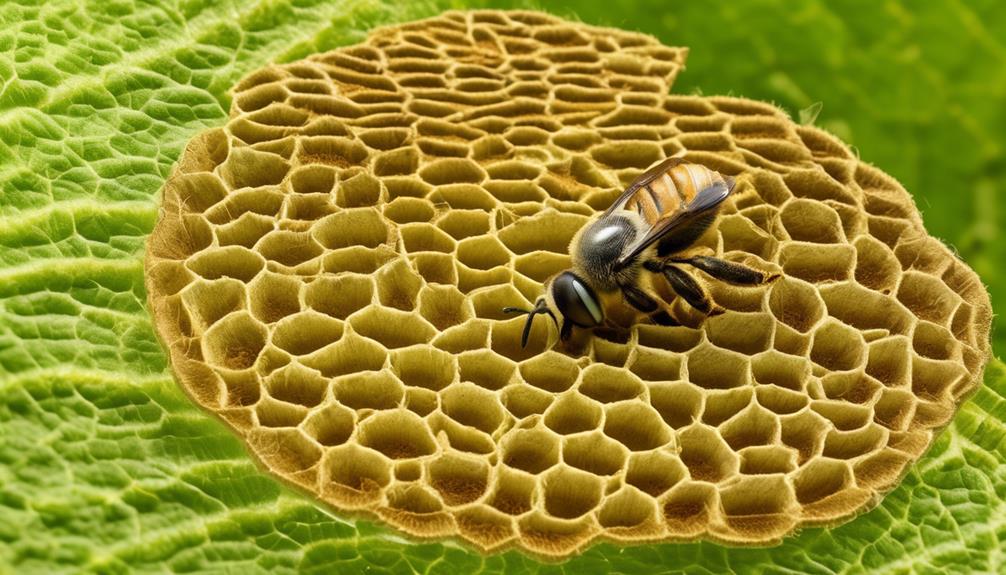
Diving into the world of leafcutter bees, you'll discover that there are over 200 species of these fascinating insects, each with their unique behaviors and roles in the ecosystem. These species range from the familiar Megachile rotundata, the alfalfa leafcutter bee that's critical to pollinating crops, to the less-known Megachile pluto, the world's largest bee.
You'll find that leafcutter bees are solitary, often nesting in small holes in wood or in the ground, where they use leaf pieces to build their nests.
Analyzing their behavior further, you'll notice that leafcutter bees aren't aggressive. They'll only sting if provoked and the females are the ones that do the stinging. The males, on the other hand, don't have stingers.
You'll also observe that leafcutter bees are more industrious than honeybees, making them valuable pollinators. Their hairy bodies carry pollen efficiently, aiding in the pollination process, which is vital for plant reproduction.
It's clear that by understanding the variety and behaviors of leafcutter bees, you're unraveling the complexities of our ecosystem and the important roles these insects play. Their existence isn't just about cutting leaves; it's about sustaining life.
The Distinctive Brown Footed Trait
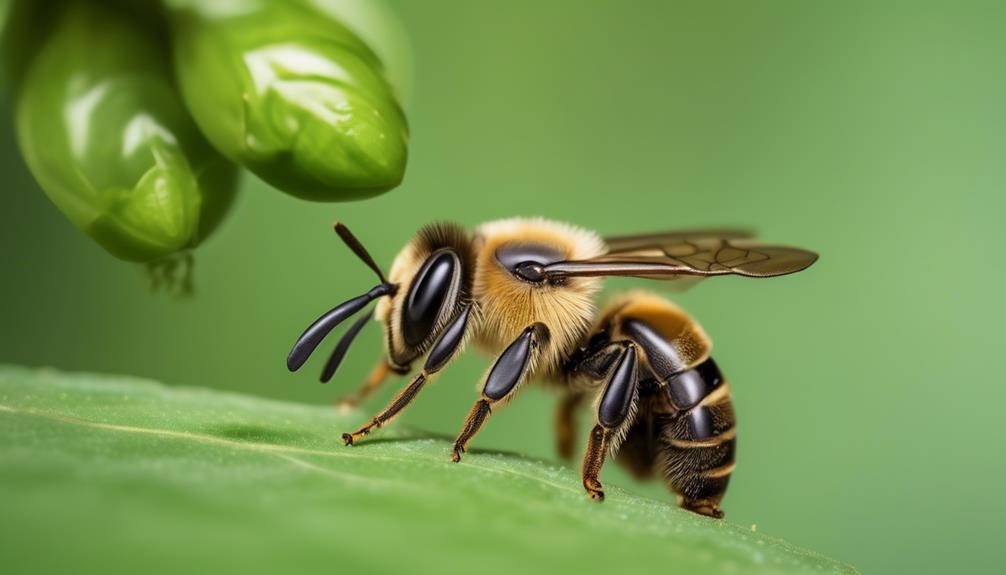
Among the myriad of leafcutter species, one stands out due to its distinctive brown-footed trait – a characteristic found particularly in the Megachile fidelis, or the Brown Footed Leafcutter Bee. This bee is unique, not just in its behavior but also in its physical characteristics.
Before delving into the specifics of this attribute, let's take a look at some basic details of this bee:
Trait | Description | Example |
|---|---|---|
Species | Megachile fidelis | Brown Footed Leafcutter Bee |
Size | 0.4 to 1.2 inches | Similar to a honey bee |
Habitat | North America | Widespread across the continent |
Unique Trait | Brown Feet | Distinctive from other leafcutter bees |
The brown-footed trait is crucial to the bee's identity. Researchers believe that this coloring may serve a specific purpose. It could be a natural adaptation for camouflage or maybe a signal to potential mates. The brown coloration, contrasting with the bee's otherwise black body, is particularly noticeable. As you delve deeper into the world of the Brown Footed Leafcutter Bee, you'll find this trait is just one of its many fascinating features.
Lifecycle of the Leafcutter Bee
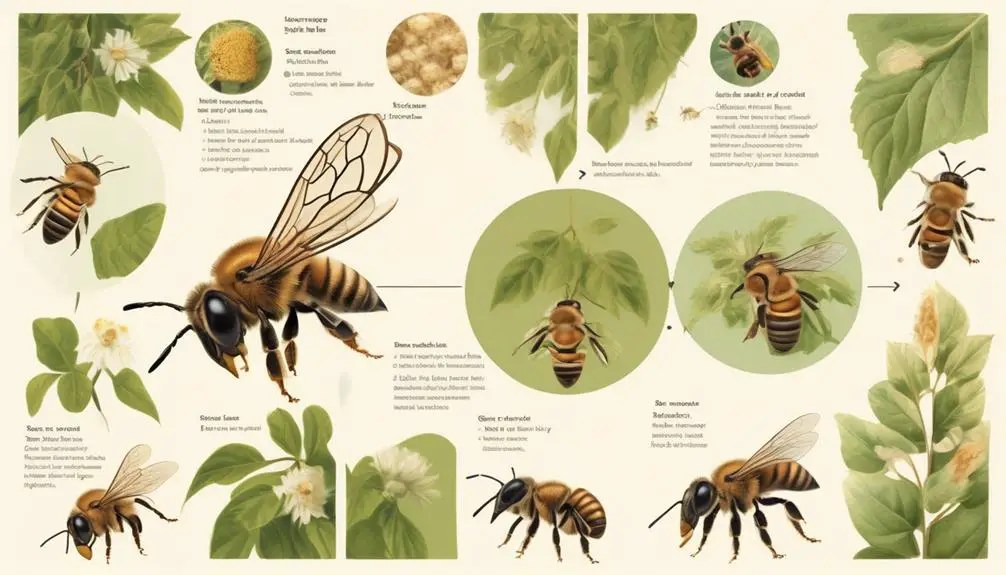
The life cycle of the Brown Footed Leafcutter Bee, a captivating process from egg to adult, offers an intriguing glimpse into the world of this distinctive insect. You may find it fascinating to learn that this cycle begins when a female cuts out small, circular pieces of leaf and rolls them into a tube, creating a perfect nest inside a hollow stem or a hole in the ground.
She then lays an egg inside this leafy cocoon, depositing a mixture of nectar and pollen, which will serve as food for the emerging larva. After sealing the nest with more leaf pieces, she moves on to construct another. In a few days, each egg hatches into a larva, which consumes the food stock, grows, and eventually spins a cocoon around itself.
The pupal stage ensues, during which the larva undergoes metamorphosis to become an adult bee. This transformation takes about a month. The adult bee then hibernates inside its cocoon, waiting for the right conditions to break out and begin its own life, thereby continuing the cycle.
This life cycle embodies an efficient, self-replicating system, and a testament to nature's ingenuity.
Role in the Ecosystem
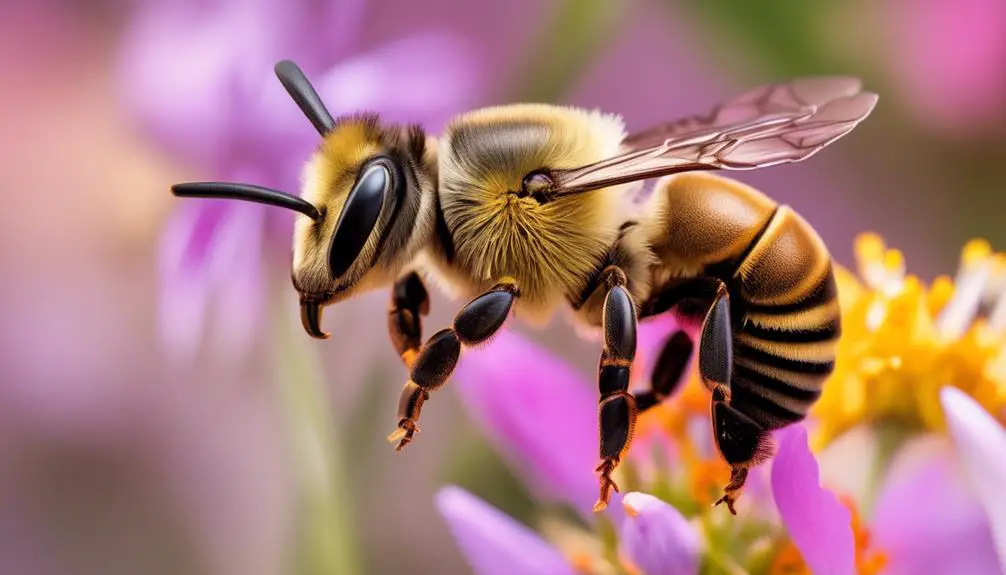
As you delve deeper into the world of the Brown Footed Leafcutter Bee, you'll discover its essential role in pollination, contributing to the health and diversity of our ecosystem. It's not only a prolific pollinator, but also an efficient one. These bees, unlike others, practice what's known as 'buzz pollination', which leads to a much more effective transfer of pollen.
To further illustrate, consider the table below:
Pollination Technique | Effectiveness | Species |
|---|---|---|
Buzz Pollination | High | Brown Footed Leafcutter Bee |
General Pollination | Variable | Various Bee Species |
Wind Pollination | Low | Non-Bee Species |
This technique, coupled with their preference for a wide variety of flowers, makes them vital for plant diversity. You'll find that their activities lead to increased flower fertilization and seed production, fostering plant biodiversity. Their nesting habits, which involve cutting leaves and flowers, also play a role in plant health by promoting new growth.
Unique Nesting Habits Explained
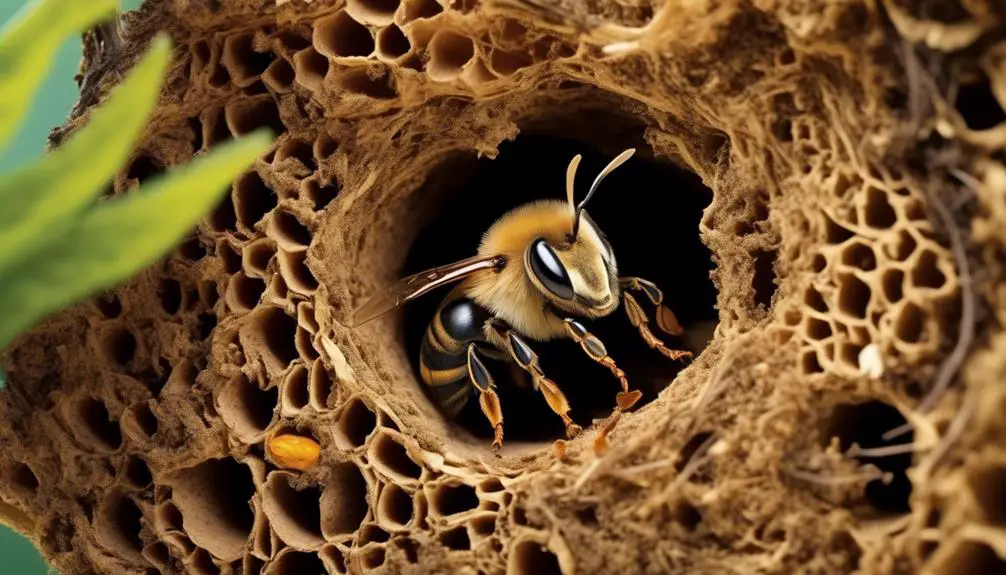
Delving into their unique nesting habits, you'll find that Brown Footed Leafcutter Bees exhibit quite an intriguing behavior, using cut-out leaf segments to construct their nests. This species, unlike others, doesn't burrow into wood or ground. Instead, they repurpose existing crevices in trees or man-made structures, filling them with leaf fragments.
What's fascinating is how these bees prepare their nests. They utilize their strong mandibles to meticulously cut precise, circular sections from leaves, which they roll up and transport back to their nesting site. These leaf segments are then arranged in a layered fashion, creating a tube-like structure. Inside, they deposit a mixture of nectar and pollen, which acts as food for their larvae.
Each nesting tube is divided into several cells, each housing a single egg. The mother bee seals each cell with a leafy plug to protect her brood from predators and the elements. Once the larvae are mature enough, they chew their way out, leaving behind the remnants of their leafy nursery.
In this process, you can see the remarkable adaptability and resourcefulness of these bees. Their unique nesting habits not only help in their survival but also contribute significantly to leaf litter decomposition.
Conclusion
In summary, you've delved into the fascinating world of the brown footed leafcutter bee. You've learned about its distinct traits, lifecycle, ecological role, and unique nesting habits.
This bee species is an integral part of our ecosystem, showcasing nature's ingenuity. Understanding its behavior and lifecycle is crucial for conservation efforts.
May your newfound knowledge inspire you to appreciate these tiny creatures even more and help in preserving their existence.

